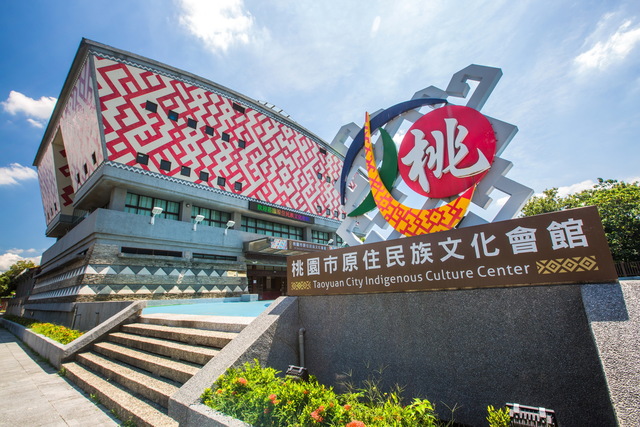Indigenous Peoples Cultural Center Introduction
The indigenous population of Taiwan is predominantly found in Hualien and Taitung, while Taoyuan City has the largest population of indigenous peoples in western Taiwan, comprising 16 tribes. The Taoyuan Indigenous Peoples Cultural Center officially opened in July 2004, serving as a hub for indigenous culture in the city and is currently listed as one of the Taoyuan Urban Story Museum sites. The Cultural Center aims to establish a landmark for indigenous culture, which is reflected in the design of the building and the surrounding plaza that showcase various indigenous styles. Notable features include totem poles representing the spirit of the tribes with beautiful lines, the Watchtower used to prevent outside invasions, and the Rainbow Avenue symbolizing the unity of different tribes, all intricately carved with characteristic totems of Taiwan's ethnic groups. The base incorporates colors from various tribal costumes, combined with Taiwan's unique topography to convey the idea of ethnic integration. The square includes introduction boards for each tribe and a distribution map of indigenous peoples across Taiwan, allowing visitors to gain a preliminary understanding of indigenous culture. The Cultural Center integrates museum functions, displaying traditional artifacts such as crafts, weaving tools, indigenous clothing, and hunting knives. The exhibition room features explanations of important events for each tribe and introductions to traditional ceremonies, providing a detailed understanding of indigenous history through informative texts and old photographs. The center also hosts art exhibitions from time to time, offering a platform for indigenous artists to showcase tribal culture. In addition to static displays, visitors can participate in guided tours and DIY experiences at the workshops of resident artists. Every Friday to Sunday, performances of indigenous dance by resident dance troupes can be enjoyed, allowing people to experience the vibrant indigenous song and dance. Annual seasonal sacrificial ceremonies are held at this venue.



































